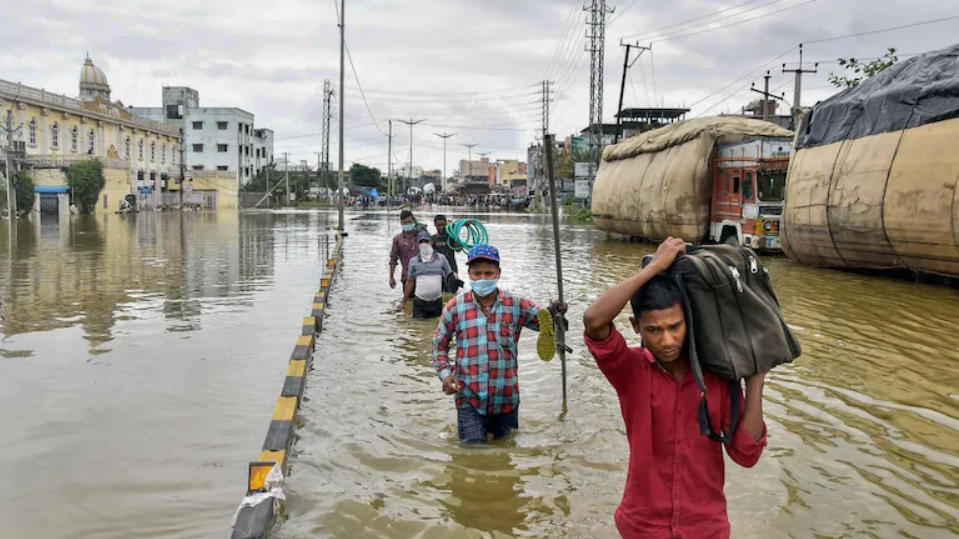Given the agrarian character of the Hyderabad land, it was originally a system of catchments. But illegal and aggressive real estate growth, construction of roads and poor waste management has taken a toll on the natural resources. Even the floodwaters carrying channels connecting one water body to the other have been encroached by private, government agencies, and their coalitions. With a decrease in forest cover, an increase in recreational groundcover, parks, and urban vegetation can be identified in both urban and sub-urban areas of the city. These have been largely occupied over lakes and ponds, with the sole purpose of boosting the tourism market and offering attractive township facilities. Concretization on the other hand has occasioned impervious surfaces and prohibited percolation of rainwater through the soil.
With the city in turmoil, one needs to look back at the policy framework entailing flood Climate Change, including, for example, the reduction of particulate matter (PM) emissions that can directly alter the radiation balance (e.g., black carbon) or measures that control emissions of carbon monoxide, nitrogen oxides (NOx), Volatile Organic Compounds (VOCs) and other pollutants that can alter the concentration of tropospheric ozone (O3) which has an indirect effect on the climate.<br /><b>Source: </b><b>IPCC</b></div>" data-gt-translate-attributes="[{"attribute":"data-cmtooltip", "format":"html"}]">mitigation and risk assessment. With a loss of thousands of hectares of water bodies over the years, strict buildings regulations and monitored bye-laws on urban infrastructure need to be imposed, while assuring a strong and unassailable relationship between the stakeholders and shareholders.
“Restore the hydrology of both Brahman Kunta and Appa Cheruvu to their maximum water spread and fence them at the buffer zone, dredge the lakes to its original storage capacity, restore inflow channels and outflow channels and fence them at its buffer zone of 7 mtrs,” appealed Dr Lubna Sarwath, State Gen Secy, Socialist party (India) and Dr Jasveen Jairath, Founder Convenor, Save Our Urban Lakes (SOUL). “Free the lakes from all encroachments.
For Hyderabad, the policy changes and their implementation have been weakly reinforced on grounds. Calculating and studying the technicalities of land use and flood prone areas using GIS tools, could not refrain the government from financing various projects across the city. These policies are also often steered by neoliberal ideologies which fail to amalgamate development progression with disaster management. Their failure to identification of environmental vulnerability and delay in administering an efficient system to provide symmetry for a self sustaining city has created a lag in ensuring a sustainable future.
The recent floods in Hyderabad has not only caused major destruction to roadways and colonies, but also displaced so many families and deprived them of basic necessities like food and water. Chief Minister, K Chandrasekhar Rao (KCR) has estimated the state’s losses at around ₹5,000 crore and sought immediate relief of ₹1,350 crore from the Centre. Farmers face loss of ₹2,000 crore with crops in over 7.35 lakh acres submerged.
Although the building authorities have laid out the bye-laws for a systemic distribution of private and public services, but at a micro-level, these fail to achieve their mark, resulting in settlements over and around floor prone sectors. Master planning schemes need to take into account the socio-environmental dynamics, rain water harvesting, treated drinking water, electricity, climate resilient structures, clean green energy to reduce pollution, limitations on mining, etc.

